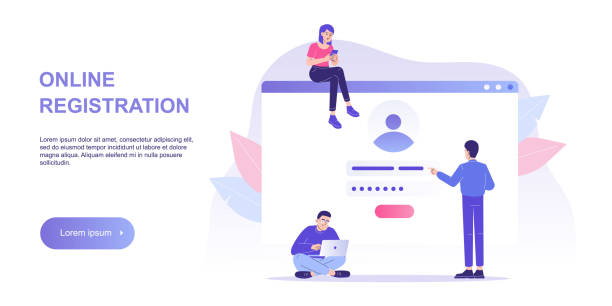Why Do You Need a Personal Website Design?
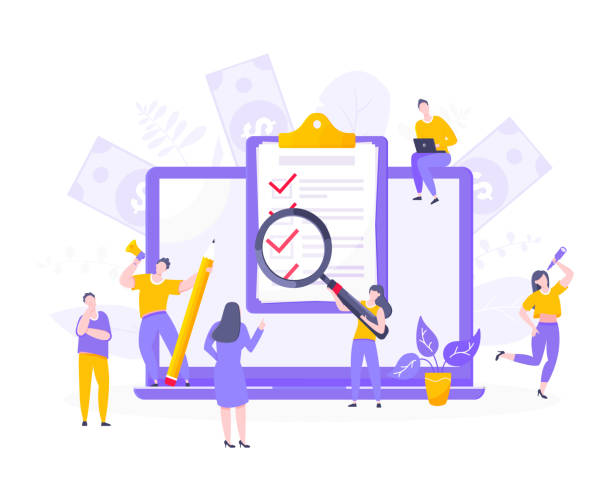
In today’s digital age, having a strong and distinctive #online_presence is no longer an option, but a necessity.
Personal website design is not only an opportunity to showcase your #personal_brand and #online_resume, but also a dedicated platform to control your own narrative in the digital space.
Unlike social media profiles, which are controlled by the platform, your personal website is a territory that belongs entirely to you.
This space allows you to display your expertise, projects, achievements, and even your personal story in a completely customized way, free from platform limitations.
For artists, writers, consultants, entrepreneurs, and even students looking for job opportunities, a personal website is an invaluable tool for attracting the attention of target audiences and potential employers.
This website can serve as a primary gateway for accessing content and communicating with you.
Furthermore, a personal website demonstrates your professionalism and seriousness in your field, allowing your audience to gain a deeper understanding of you and your activities.
This space empowers you to have complete control over how you present yourself in the digital world and to leave a lasting impression.
Imagine an employer looking for a specialist; is searching a LinkedIn profile more comprehensive or a professional personal website that best introduces all aspects of your work and personality? The answer to this question is perfectly clear and doubles the importance of investing in personal website design.
Does your current website display your brand’s credibility as it should? Or does it drive away potential customers?
RasawWeb, with years of experience in professional corporate website design, is your comprehensive solution.
✅ A modern, beautiful website tailored to your brand’s identity
✅ Significant increase in lead generation and new customer acquisition
⚡ Contact RasawWeb now for a free consultation on corporate website design!
Initial Steps in Designing a Successful Personal Website

Before taking any practical steps towards designing a personal website, it is very important to take the initial steps with care and planning.
These steps form the foundation of a successful and purposeful website.
The first step is clear #goal_setting.
You need to specify what you expect from this website; will it be an online portfolio, a personal blog for sharing thoughts, or a platform for offering services? Answering this question will clarify your path in choosing content, design, and tools.
The next step is #target_audience_identification.
Knowing who will visit your website helps you choose the appropriate language, tone, and design style.
Are your audiences professional colleagues or the general public? Then it’s time for #content_planning.
Prepare a list of the types of content you want to provide (such as resume, portfolio, blog articles, contact information).
This content must align with your goals and audience.
Also, choosing a suitable and attractive domain name that reflects your personal brand and is easy to remember is of particular importance.
Planning the initial structure of the website (sitemap) is also among the vital actions; this helps you ensure that all necessary information is logically and accessibly arranged for users.
These initial steps, although they may seem time-consuming, prevent later confusion and help you have a clear and purposeful path in your website design process.
Ultimately, by having a cohesive plan, you can ensure a confident start to your project and pave the way for success.
Key Elements and Structure of an Ideal Personal Website
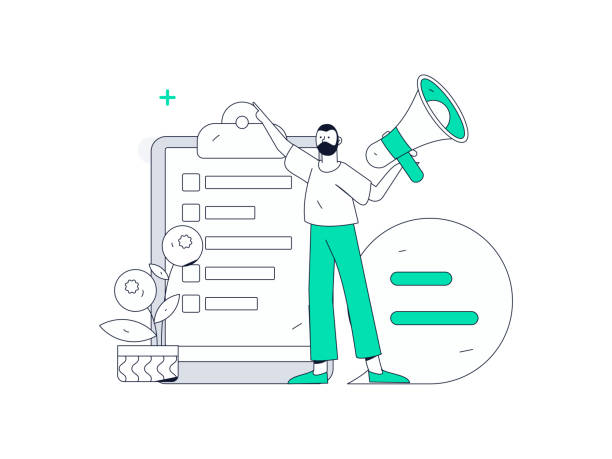
A successful personal website design requires a strong structure and elements that are both visually appealing and functionally meet user needs.
The first and most important section is the #Home_Page, which serves as your website’s storefront.
This page should quickly inform visitors about who you are and what you offer; from a short, engaging biography to links to the most important sections of the site.
The next crucial section is the #About_Me section.
This page is an opportunity to tell your story, experiences, skills, and goals in an intimate and personal way.
This is where you can connect more deeply with your audience.
Also, if your profession involves projects or artistic works, a #Portfolio section is essential.
This section should include your best works with sufficient details and high-quality images to showcase your abilities well.
Contact methods should also be clearly accessible on the website so visitors can easily reach you.
This can include a contact form, email address, or links to your social media.
If you intend to share your knowledge or perspectives, the Blog section for publishing articles and updates is very useful.
Finally, paying attention to details such as page loading speed, responsive design for correct display on all devices (mobile, tablet, desktop), and easy navigation significantly helps improve user experience and retain visitors.
Designing a personal website by adhering to these principles helps you create a professional and effective platform.
| Section | Description | Main Goal |
|---|---|---|
| Home Page | Overall introduction of you and your services at a glance | First impression and user guidance |
| About Me | Personal story, skills, experiences, and goals | Building connection and trust |
| Portfolio | Best projects and completed works | Proving abilities and skills |
| Services/Expertise | Detailed introduction of the services you provide | Attracting potential clients |
| Contact Me | Contact form, email, phone number, and social networks | Providing easy communication channels |
| Blog | Articles, news, and personal insights | Knowledge sharing and increasing SEO traffic |
Choosing the Right Tools for Personal Website Design
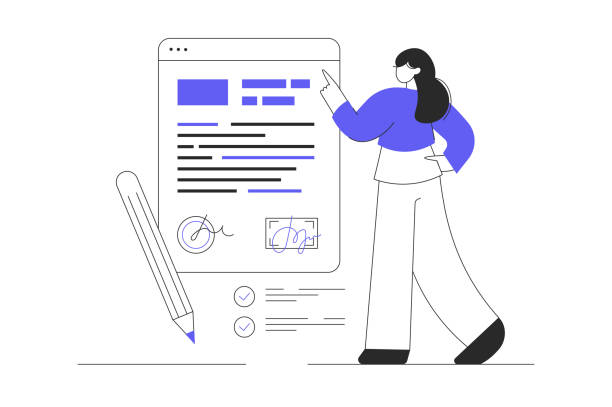
One of the most important decisions in the process of personal website design is choosing the right tools and platform.
This choice depends on your technical knowledge level, budget, and specific needs.
There are numerous options for building a website, from Content Management Systems (CMS) to drag-and-drop website builders, and even #coding from scratch.
#WordPress, as the most popular CMS in the world, is a powerful and flexible option.
With thousands of themes and plugins, WordPress allows you to create a fully customized website without needing deep programming knowledge.
This platform is very suitable for bloggers, artists, and small businesses.
On the other hand, #website_builders like Wix, Squarespace, and Weebly are ideal options for individuals seeking simplicity and speed in design.
These platforms have intuitive user interfaces and allow you to build your website in a few hours using ready-made templates and drag-and-drop functionality.
These options are generally suitable for those who want a beautiful and functional website but do not have the time or interest to learn the technical aspects of website creation.
In contrast, for web developers or those seeking complete control and infinite customization, coding a website from scratch using languages like HTML, CSS, JavaScript, and frameworks like React or Vue.js is the best solution.
This approach provides the most flexibility but requires significant technical knowledge.
Choosing the right platform forms the foundation of your website’s success and should be done carefully, considering all aspects.
Each of these tools has its own advantages and disadvantages that should be evaluated in accordance with your project’s needs.
Are visitors leaving your e-commerce site before making a purchase? Don’t worry anymore! With RasawWeb’s professional e-commerce website design services, permanently solve the problem of not converting visitors into customers!
✅ Significant increase in conversion rates and sales
✅ Unrivaled and appealing user experience
⚡ Contact us now for a free consultation!
Creating Engaging and Practical Content for Your Personal Website
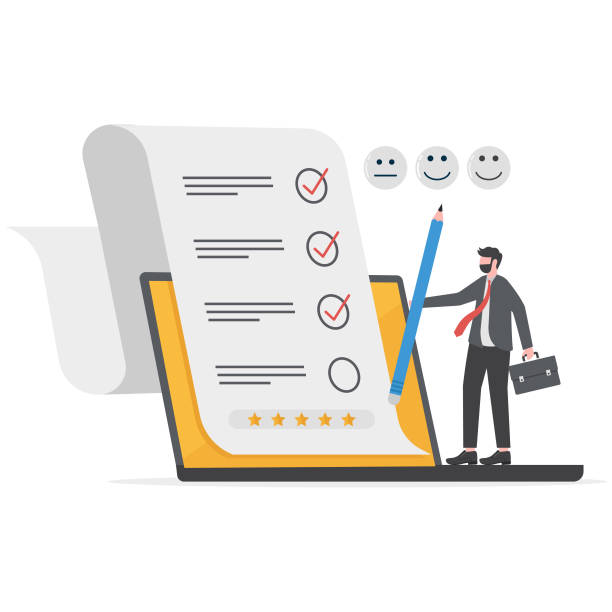
Content is the beating heart of any personal website, and its quality directly impacts your site’s attractiveness and effectiveness.
#Content_creation on a personal website should go beyond merely inserting information; it should narrate your story, your expertise, and your goals.
To start, write about yourself; not just a dry list of achievements, but a story that shows who you are, how you got here and what makes you unique.
This personal #storytelling attracts audiences and allows them to connect more deeply with you.
If you have specific expertise, specialized and educational articles in the form of a #personal_blog can showcase your knowledge and introduce you as an authority in your field.
These articles not only create added value for visitors but also help improve your website’s SEO.
Present your portfolio visually and engagingly.
For each project, explain the challenge, the solution you provided, and the results achieved.
These descriptions should be concise and useful but contain enough detail to understand the depth of your work.
Using high-quality images, videos, and even audio files can significantly increase the appeal of your content.
Don’t forget that your content should be up-to-date and relevant to your field of work.
Feedback and testimonials from previous clients or colleagues can also boost your credibility.
Always try to produce content that not only provides useful information but also inspires or solves your audience’s problems.
This content strategy transforms your personal website from a simple online resume into a dynamic and valuable platform.
Search Engine Optimization (SEO) for Personal Website Design

After completing the personal website design, the next important step is ensuring its visibility.
This is where Search Engine Optimization (SEO) comes into play.
SEO is a set of techniques that helps your website rank higher in Google and other search engine results, allowing more people to find it.
The first step is #keyword_research.
Identifying the words and phrases your target audience uses to find services or expertise similar to yours is crucial.
You should naturally incorporate these keywords into your titles, meta descriptions, page content, and even URL addresses.
Additionally, optimizing content for #local_SEO can be beneficial for some professions (such as local consultants or artists).
Ensuring your website has a #Responsive_design for mobile is a very important ranking factor for Google.
Website loading speed also directly affects user experience and your SEO ranking; the faster the site loads, the better.
#Link_building also plays a significant role; link building refers to acquiring links from other reputable websites (Backlinks) to your website, which indicates the credibility and importance of your content.
Furthermore, proper use of Heading tags (H1, H2, H3) and image descriptions (Alt Text) helps search engines better understand your website’s structure and content.
Although SEO is an ongoing process and its results are not achieved overnight, by correctly implementing these principles, your personal website can gradually gain a better position in search engines and attract more organic traffic.
Ultimately, by considering these principles in website design and maintenance, you will take a significant step towards increasing your visibility.
Principles of Visual Design and User Experience in Personal Websites

Aesthetics and usability are two main pillars in the success of a personal website design.
An attractive visual design not only makes the first impression on the visitor but can also convey your sense of professionalism and creativity.
However, beauty without functionality is meaningless; therefore, user experience (UX) is equally important.
Your #user_interface (UI) should be clean, simple, and uncluttered.
Using sufficient white space, a harmonious color scheme, and readable fonts contributes to visual appeal.
Choosing a color palette that aligns with your personal brand and conveys the right feeling is crucial.
For example, bright and cheerful colors are suitable for creativity, while neutral colors are appropriate for seriousness and professionalism.
All design elements should be implemented with the aim of #UX_UI and improving the visitor’s experience.
Your website should be #responsive_design, meaning it automatically adapts to the screen size of various devices (mobile, tablet, laptop).
This ensures that your website displays correctly on any platform and provides a consistent user experience.
Site navigation should be very simple and intuitive.
Users should be able to easily find different sections of the website and access the desired information without confusion.
This includes clear menus, clickable links, and distinct Calls to Action.
Images and videos should be high quality and optimized for the web to avoid slowing down site loading speed.
Ultimately, a user-centered design, which prioritizes the needs and behaviors of visitors, can transform your personal website into a powerful tool for attracting and retaining an audience.
Paying attention to small details in visual design and UX can make a big difference in the success of your website.
| Design Principle | Explanation | Importance for a Personal Website |
|---|---|---|
| Simplicity and Clarity | Avoiding clutter, using white space | Focus on main content and reduce distractions |
| Color and Font Harmony | Choosing a color palette and typography suitable for the brand | Creating a strong visual identity and high readability |
| Responsive Design | Compatibility with all devices (mobile, tablet) | Accessibility for a wide range of users |
| Easy and Intuitive Navigation | Clear menus, logical and understandable links | Users can easily find the desired content |
| Image and Media Optimization | Compression and use of appropriate formats | Increase site loading speed and improve UX |
| Clear Call to Action (CTA) | Specific buttons and links for the next action | Guiding the user towards website goals (e.g., contact, purchase) |
Maintaining and Updating Your Personal Website
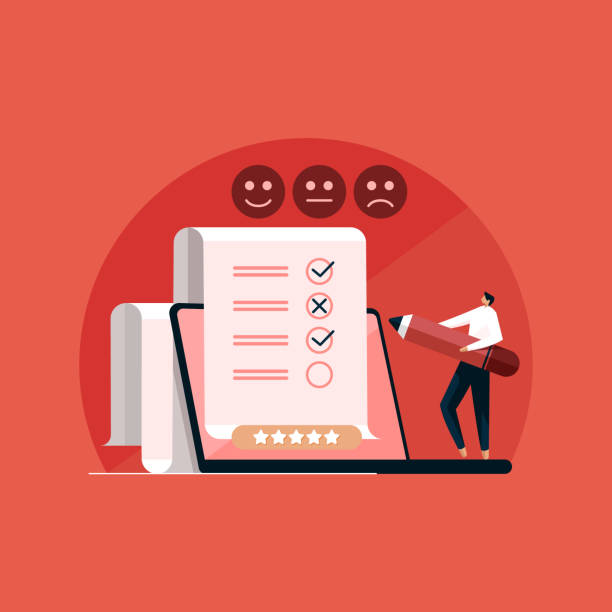
After completing your personal website design and launching it, your work doesn’t end.
Regular maintenance and updates are of vital importance for maintaining security, optimal performance, and continuous communication with your audience.
One of the most important aspects of maintenance is #website_security.
Websites are constantly exposed to cyberattacks and malware.
Therefore, ensuring continuous updates of the platform (like WordPress), plugins, and themes, installing an SSL certificate for data encryption (HTTPS), and using strong passwords are essential.
Regular #backups of the entire website (files and database) is also a crucial action so that in case of a problem, you can quickly restore your website.
In addition to security, monitoring #website_performance_analysis is also very important.
Using tools like Google Analytics allows you to analyze site traffic, user behavior, popular pages, and referral sources.
This information helps you improve your content and marketing strategy.
Website content should also be updated regularly.
Adding new articles to the blog, updating your portfolio with new projects, and ensuring accurate contact information keeps your website alive and engaging.
These content updates are not only beneficial for users but also help your website’s SEO.
Neglecting maintenance and updates can lead to security issues, decreased search engine rankings, and poor user experience.
Therefore, an inseparable part of having a professional website is a commitment to its continuous maintenance.
Does your company website create a professional and lasting first impression in the minds of potential customers? RasawWeb, with its professional corporate website design, not only represents your brand’s credibility but also opens a path for your business growth.
✅ Create a powerful and reliable brand image
✅ Attract target customers and increase sales
⚡ Get a free consultation
Methods for Increasing Traffic and Engagement on Your Personal Website

Simply having a beautiful and functional personal website design is not enough; you must also strive to attract visitors and increase engagement.
One of the most effective ways is using #social_networks.
Share your website on your social profiles such as LinkedIn, Instagram, Twitter, and Facebook.
Promote your blog content on these networks to drive traffic to your website.
#Content_marketing plays a key role in attracting visitors.
Producing valuable content relevant to your expertise that solves audience problems or answers their questions can establish you as an authority in your field and lead to organic traffic.
Using #email_marketing is also an excellent way to stay connected with visitors.
You can launch a newsletter and invite visitors to subscribe for updates, new articles, or special offers.
This allows you to communicate directly with your audience and encourage them to revisit your website.
Participating in online forums related to your field of work and including your website link in your signature can also be a good source for attracting traffic.
Additionally, hosting webinars, online workshops, or even podcasts that link to your website can help increase your visibility.
Encouraging visitors to leave comments on your blog or share your content on social media increases their engagement.
Ultimately, increasing traffic and engagement is an ongoing process achieved through patience, creativity, and actively promoting your content, which helps solidify your online presence.
The Future of Personal Website Design and New Trends

The world of personal website design is constantly evolving, with exciting future prospects driven by new technologies.
One of the biggest trends is the increasing role of #Artificial_Intelligence and machine learning in personalizing the user experience.
Future websites may be able to dynamically change their content and layout based on each visitor’s behavior and preferences, which will significantly enhance user engagement and satisfaction.
#Web3 and blockchain technology can also influence this field.
Ideas such as user ownership of personal data and decentralized websites may lead to new models of online presence that give individuals more control.
Immersive user experience is also growing.
With the advancement of #Virtual_Reality (VR) and Augmented Reality (AR), personal websites in the future may include interactive 3D spaces where users can navigate and engage with content in entirely new ways.
Voice search is also becoming widespread, and websites need to be optimized to respond to this type of search.
Furthermore, given increasing concerns about data privacy, it is expected that more personal websites will focus on transparency in data collection and usage, providing more tools for users to control their privacy.
Ultimately, simplicity and efficiency in design will always be important, but with these new trends, personal websites will transform into more dynamic, intelligent, and interactive platforms, enabling individuals to introduce themselves and connect with others in the digital world in unprecedented ways.
It is predicted that personal website design will move towards greater integration with artificial intelligence and immersive experiences.
Frequently Asked Questions
| Question | Answer |
|---|---|
| Why should we have a personal website? | A personal website helps you build your personal brand, showcase your skills and portfolio, connect with your audience, and gain new career opportunities. |
| What steps should be taken for personal website design? | The steps include defining goals, choosing a domain name and hosting, selecting a platform (e.g., WordPress), designing the user interface, content creation, optimizing for search engines (SEO), and launching. |
| Do I necessarily need to know coding to design a personal website? | No, by using Content Management Systems (CMS) like WordPress or Website Builders like Wix and Squarespace, you can design your website without needing to code. |
| What is a Domain Name and how do I choose it? | A domain name is your website’s address on the internet (e.g., yourname.com). It’s best to choose a name that is short, memorable, relevant to you or your business, and has a suitable extension (like .com, .ir). |
| What is Hosting and why do I need it? | Hosting is a space on the internet where all your website’s files and information (such as images, texts, codes) are stored so they are always accessible to users. Without hosting, your website will not be visible. |
| What should the content of a personal website include? | Content usually includes an About Me page, portfolio, services/skills, blog (articles), contact information, and a contact form. |
| How can I optimize my personal website for search engines (SEO)? | By using relevant keywords, producing high-quality content, improving website loading speed, being mobile-responsive, building internal and external links, and optimizing title tags and descriptions. |
| Why is Responsive Design important for a personal website? | Responsive design ensures that your website displays correctly on all devices (computers, tablets, mobile phones) and provides a good user experience, which is also important for SEO. |
| What should I do for personal website security? | Use an SSL certificate (HTTPS), regularly update the platform and plugins, use strong passwords, perform regular backups, and install a firewall or security plugins. |
| How can I increase traffic (visitors) to my personal website? | Through SEO optimization, content marketing (blogging), social media activity, email marketing, online advertising, and collaborations with other websites. |
And other services of RasaWeb Advertising Agency in the field of advertising
Smart Direct Marketing: An effective tool for customer acquisition through attractive UI design.
Smart Advertising Campaign: Designed for businesses seeking campaign management through attractive UI design.
Smart Marketplace: A creative platform for improving campaign management with intelligent data analysis.
Smart Digital Advertising: A professional solution for improving SEO ranking with a focus on Google Ads management.
Smart Custom Software: An innovative service for increasing user engagement through SEO-driven content strategy.
And over hundreds of other services in the field of internet advertising, advertising consultation, and organizational solutions
Internet Advertising | Advertising Strategy | Advertorial
Resources
Step-by-step Personal Website Design
SEO Optimization for Personal Website
Guide to Choosing a Suitable Domain Name
Best Personal Website Builders
? Are you ready to transform your business in the digital world? RasawWeb Afarin Digital Marketing Agency, with expertise in SEO, content marketing, social media management, and personal website design, paves your path to growth. For the prosperity of your business, contact our experts today.
📍 Tehran, Mirdamad Street, next to Bank Markazi, Kazeroon Jonubi Alley, Ramin Alley, No. 6

